“A place is a place in the heart; it’s a relationship.”
—Václav Cílek, from To Breathe with Birds
Over the last month, the early morning walks I wrote about in January have been accompanied in part by Robert Macfarlane’s book The Old Ways: A Journey on Foot - listening to a book about walking while walking, surrounded by the quiet beauty of a winter morning or the swirling winds and riled up seas, and while measuring my own steps around Amalfi’s harbor. There is no better place—for me at least—to spend time walking and thinking about one of my favorite topics: our relationship with landscape and how certain places weave their way into our hearts, becoming inseparable with who we are.
Sixteen years on, I still quietly marvel at Amalfi. It struck me how Macfarlane talked of Nan Shepherd (whose small yet mighty book The Living Mountain is a unique treasure that I enjoyed earlier this winter) and how she understood “that landscape has long offered us keen ways of figuring ourselves to ourselves, strong means of shaping memories and giving form to thought.” As I looked at Amalfi bathed in the golden morning sunshine, I realized that why these early morning walks have become so important to the shape of my days. I was figuring myself to myself in this place that most certainly has a place in my heart - as captured in the quotation above by the Czech writer Václav Cílek. Macfarlane shared two of Cílek’s “pilgrim’s rules,” one of which says: “A place within a landscape corresponds to a place within the heart.” This place, the sunrise this morning, most certainly corresponds to a place in my heart.
When I share these photos—just a moment captured here or there out of so many beautiful moments—they are, in their own small way, a piece of this place and a piece of my heart that I can send off around the world to land in your pocket. Think of it as a little something for San Valentino from Amalfi.
While February is ostensibly the month of romance, I’d pick two other “r” words to describe this month in Amalfi: rest and renewal. Rest because it’s the period when most shops and restaurants are closed. This is the quiet time of year and vacation time for many locals who are usually off to warmer climates.
Always one drawn to the paths that are “grassy and wanted wear,” I’m soon off to a place that’s lately been making the news for colder than usual temperatures: Nebraska. While it’s entertaining enough just to seen the facial contortions Amalfitani make when I say things like -17°, I’m off at the end of the month for a much anticipated visit to see my family. (And a few hundred thousand Sandhill cranes if I’m lucky.)
- The annual tradition of putting the beach back where we think it should be in Amalfi.
February is the month of renewal here as well since it’s also when everything starts coming alive again after the winter. Every day something changes. The beach gets put back into place after winter storms. Here someone is busy painting, there someone is redecorating. A new shop here, maybe a new restaurant there. By the time Carnevale arrives—usually toward the end of the month—there’s an atmosphere of the new season arriving in the air.
And the scent of lasagna. So much lasagna. The Neapolitans do many things well, but gastronomically they really hit the ball out of the park with Martedì Grasso (Fat Tuesday). Lasagna is traditional, but not just any lasagna. I call it the “everything but the kitchen sink” lasagna as it’s full of meatballs, sausage, salami, hard boiled eggs, and cheese … so much cheese. And then there are all the desserts like chiacchiere (the name means “chit chat”). It truly is enough to hold you over until Easter. And it’ll have to hold me over while I’m in America since I leave the day after Carnevale. About a week after I booked my plane tickets I was talking to my husband’s sister (who makes the most incredible lasagna) and I panicked … oh no am I going to miss the lasagna?! A quick Google search confirmed the date and I’m leaving the morning after. Meno male!
Well that’s enough chiacchiere. I’ll save you a piece of lasagna!
Ciao from Amalfi,
Laura
GRAZIE TO MY SUBSCRIBERS!
You may have noticed last month that it’s now possible to subscribe to Ciao Amalfi. While content won’t be behind a paywall, your support does allow me to do very cool—and usually nerdy—things like get my hands on historic photos, postcards, and vintage books about the Amalfi Coast. Being able to see these in person is incredible, but it also means that I can share them here with you. Here’s a sneak peek:
That’s just a little glimpse of something that you’ll hear more about soon. While working on last month’s reflection and celebration of the Amalfi Coast Road, I became interested (to put it mildly) in knowing more about the terrible landslide that happened in Amalfi on December 22, 1899. This devastating event left a lasting mark on the urban fabric of Amalfi. I’ll be showing you how in a newsletter this spring.
In the meantime, a big thank you to everyone who has upgraded to a paid subscription so far this year!
FROM THE PAST
- Coastal Road Near Sorrento-Amalfi by Karl Wilhelm Diefenbach.
During the deep dive on the Amalfi Coast Road, I also happened across this beautiful painting by Karl Wilhelm Diefenbach (1851-1913) of the road from Sorrento to Amalfi. Diefenbach was a German artist who came to Capri in 1900 and lived and worked there until his death in 1913. He’s a most interesting character, worthy of a newsletter in itself, and his paintings are as dark and moody as Capri is brilliant on a summer day. Since the road from Sorrento to Amalfi wasn’t opened until the early 1890s, Diefenbach would have seen it not long after it was completed. Just around those dark curves lies Positano!
While I’m not sure where that particular Diefenbach painting ended up, the next time you’re on Capri you can visit the beautiful Certosa di San Giacomo and stroll through the quiet halls to see the collection of his works that has been housed there since 1974.
Right now we all have the chance to help the Certosa di San Giacomo get funding for an important restoration of the Diefenbach collection. Click below to vote for their project on Art Bonus, a project from the Italian Ministry of Culture. While the webpage is in Italian, it’s a simple click on the button that says “VOTA IL PROGETTO” (no need to register) to vote. Let’s help them get as many votes as possible for the project!
KEEP READING
Looking for a good read about Italy? Here’s what has caught my eye:
The Casa dei Vettii is open again at Pompeii for the first time in 20 years and this is a lovely article about Pompeii’s Sistine Chapel from the Le Sirenuse Journal.
Thank you to my friend Ginger for sharing this article about a family-run Italian business that’s building invisible solar panels for Pompeii and other historic sites.
Dogs aren’t just man’s best friend, read more about the plan to save Italy's dying olive trees with dogs.
This is a nice video about the production of colatura di alici in Cetara.
Have you heard about the “rebel nuns” of Ravello? (If you think I put that there mostly for the alliteration, you’re not wrong.)
PS: WIN A STAY IN FLORENCE!
Have you seen? My friends at Italy Perfect and Dream of Italy are giving away a four night stay in an Italy Perfect apartment in Florence. It’s super easy to enter (just add your email address), so don’t miss your chance before February 28, 2023.






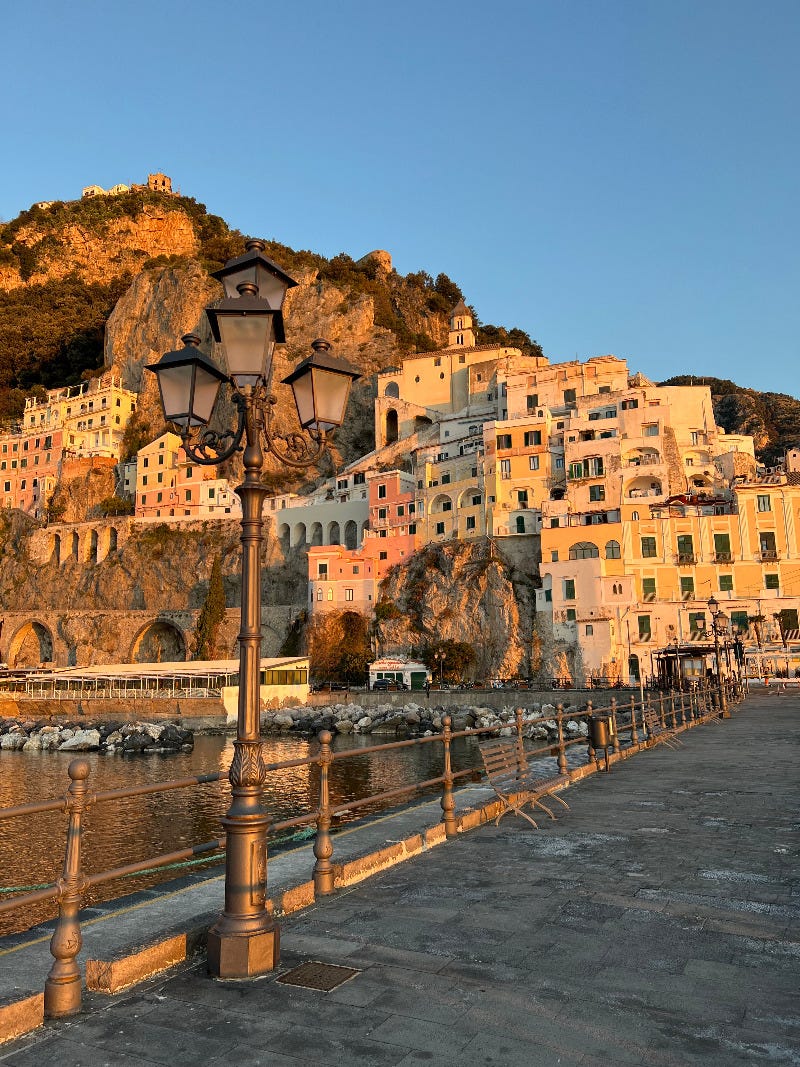
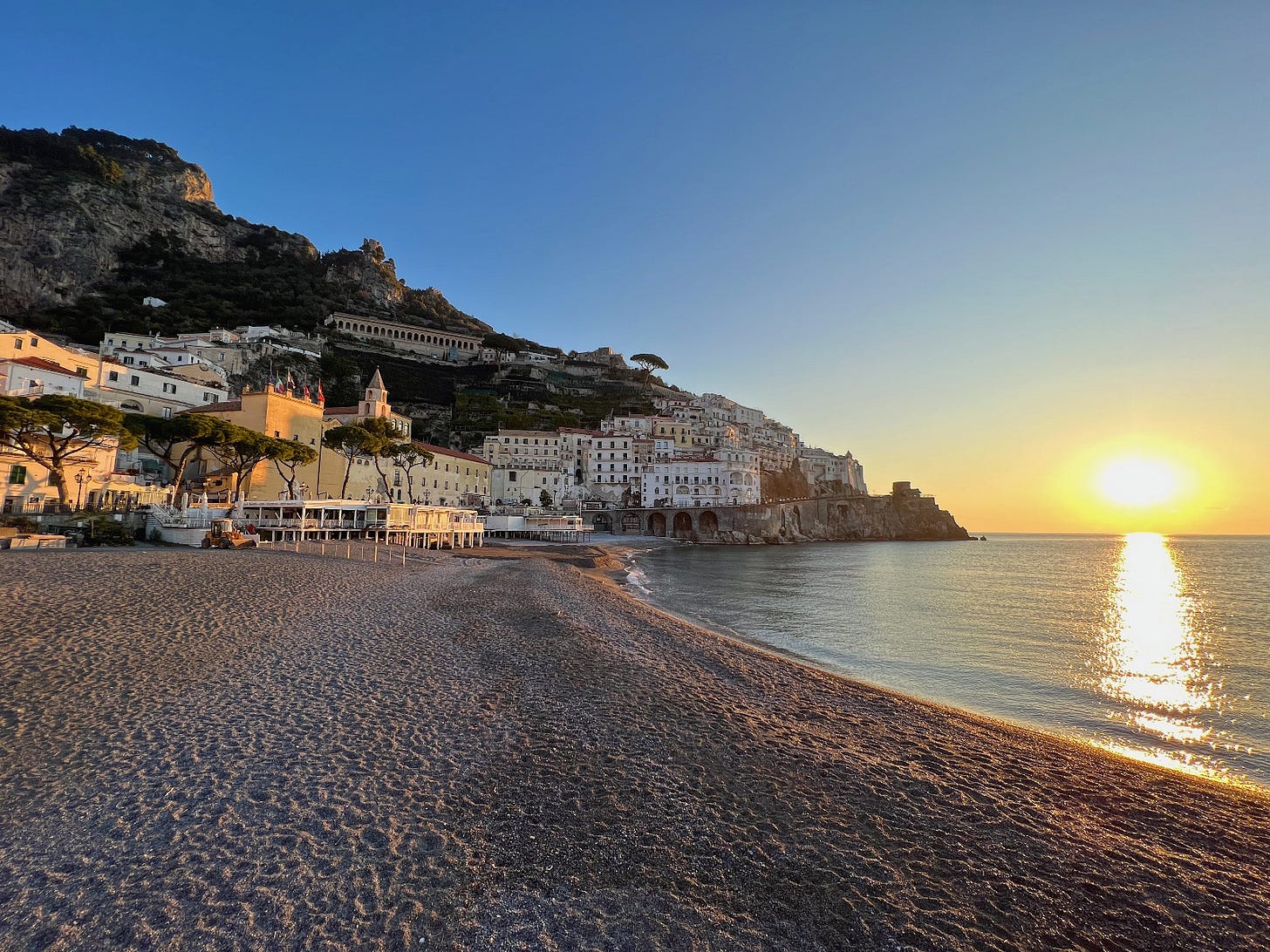

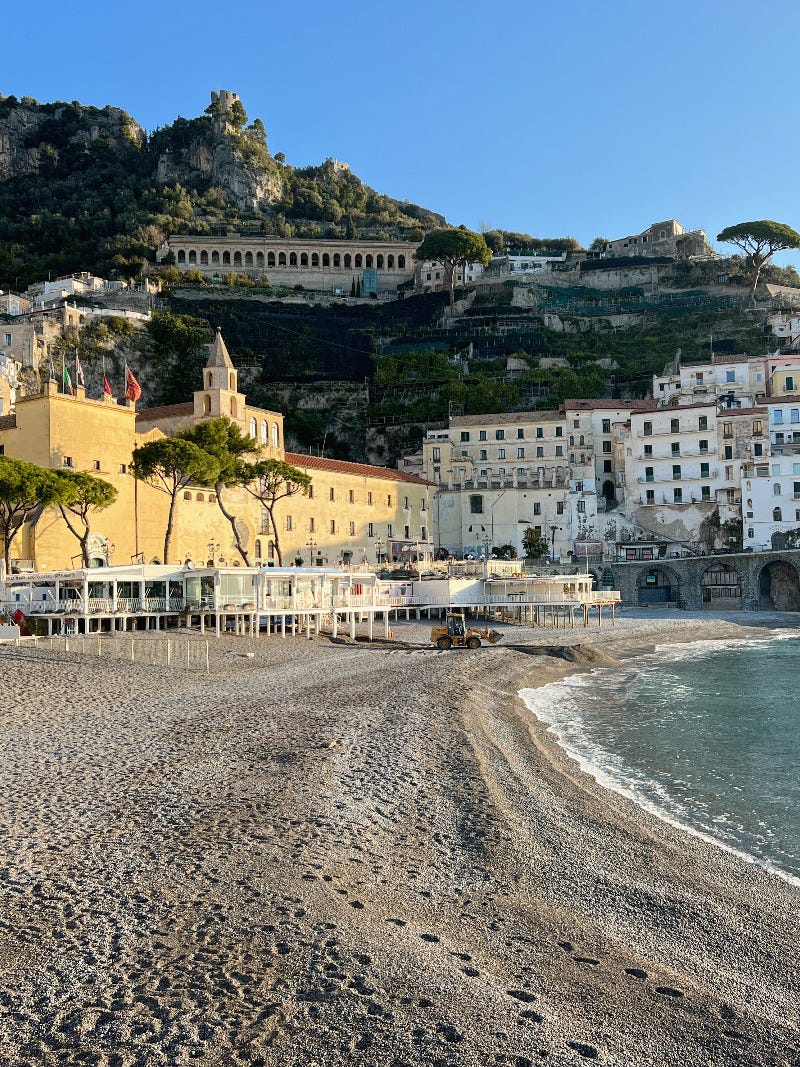
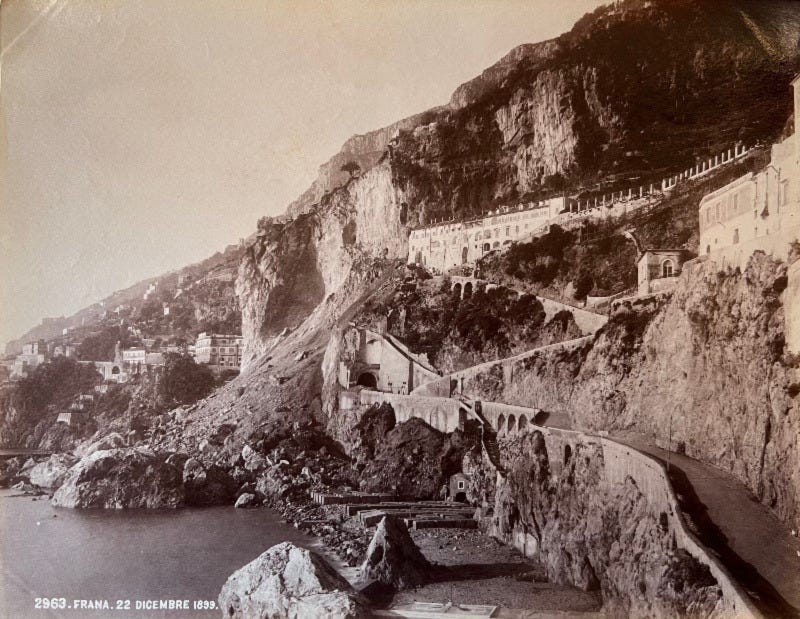
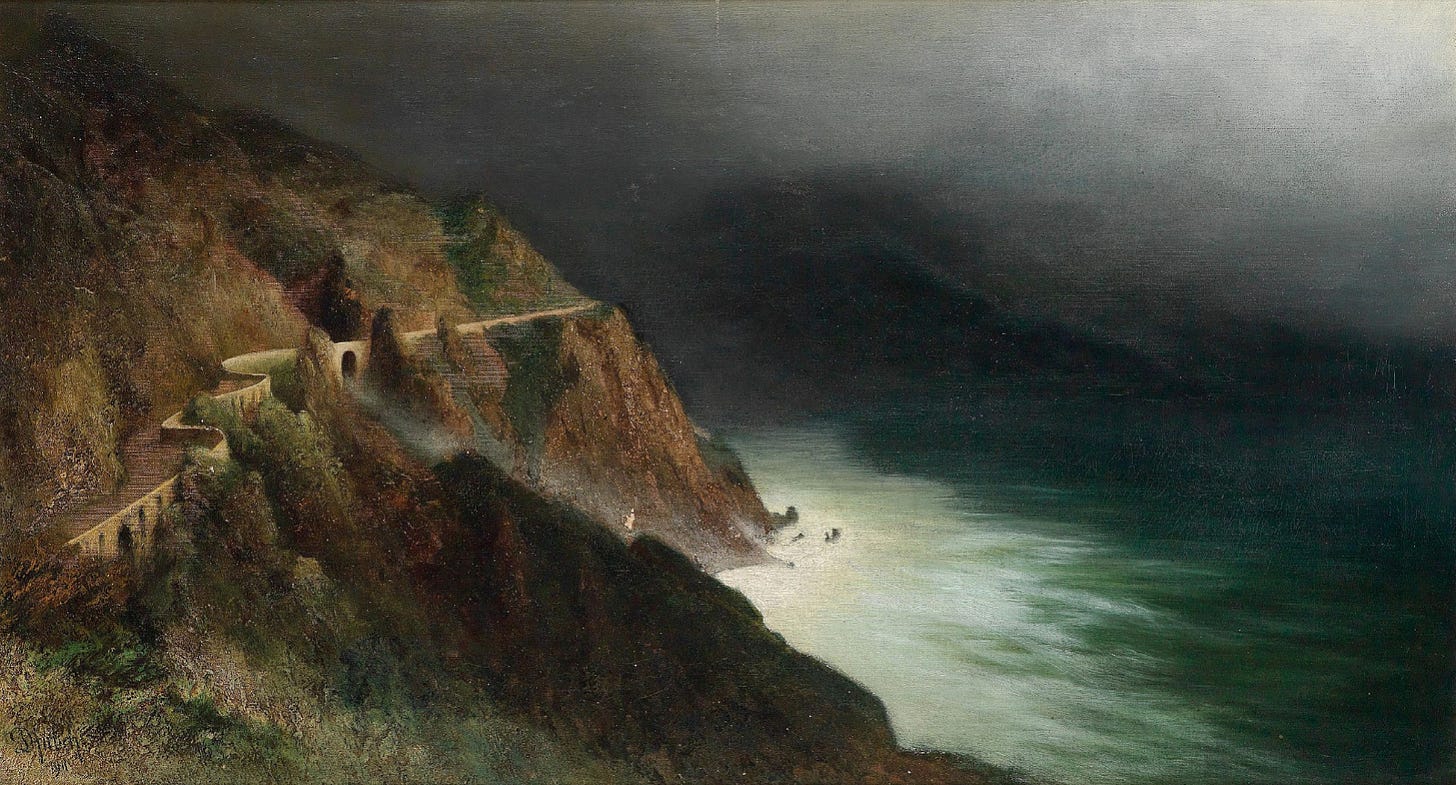
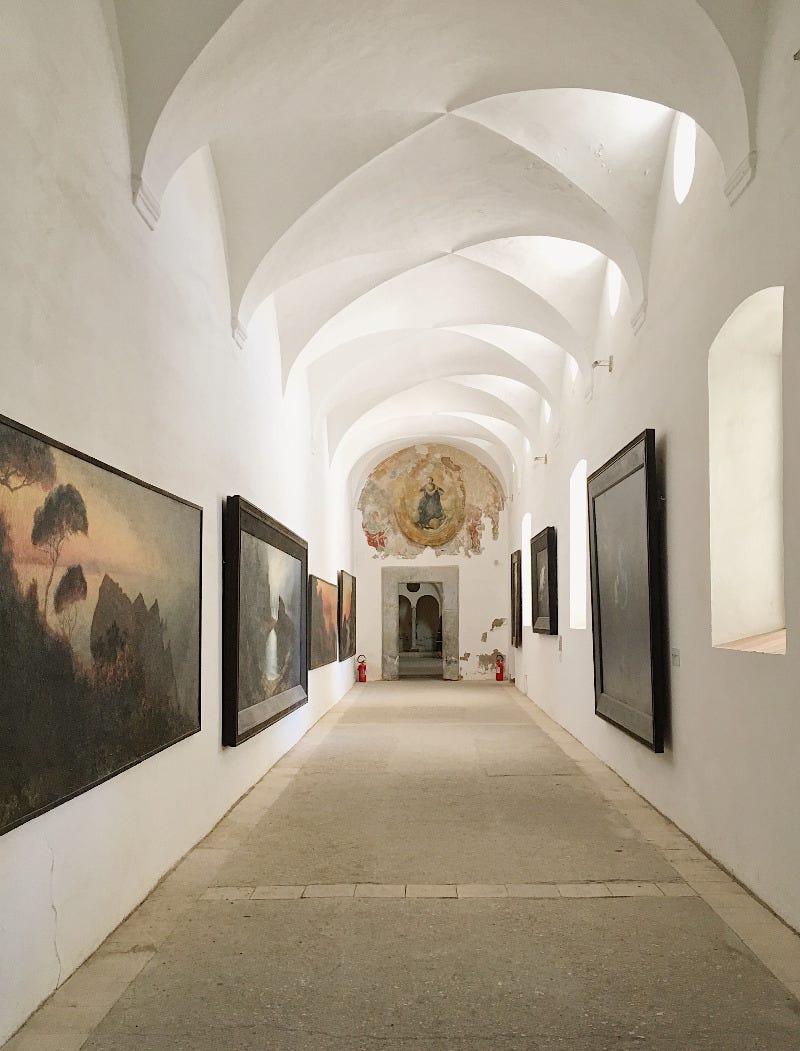

Such a lovely reflection Laura and I am left imagining you figuring yourself to yourself walking along the beach. I tried to imagine you with a moody Amalfi coast in the backdrop à la Diefenback but can't. I only see sun! The quote you pulled from Macfarlane from Václav Cílek spoke to me “A place within a landscape corresponds to a place within the heart.” I feel this when I am walking along the Appia Antica. Wishing you much rest and renewal this February.
Sorry the correct spelling is chiacchiere? I would love that recipe! Thank you.